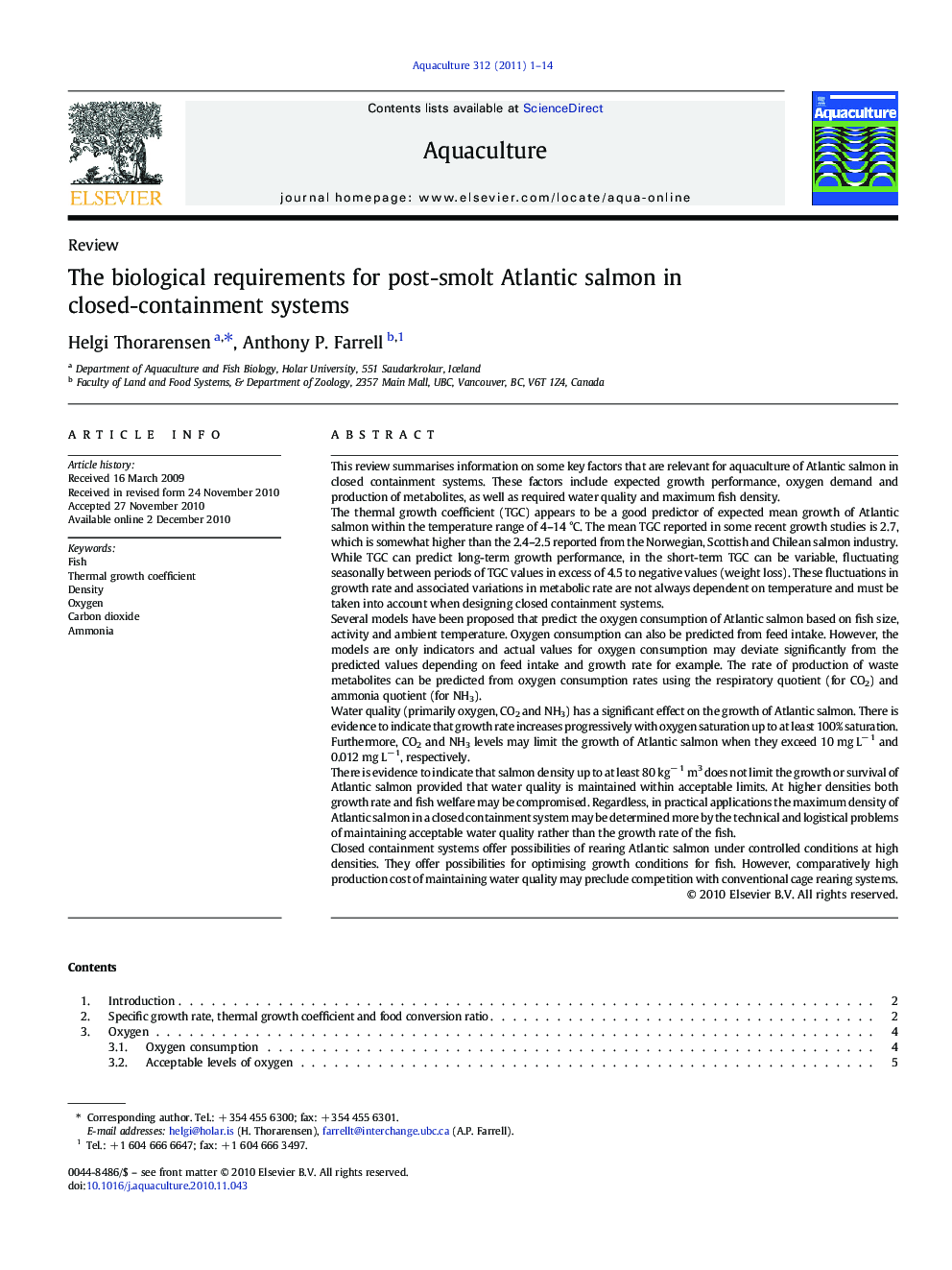| کد مقاله | کد نشریه | سال انتشار | مقاله انگلیسی | نسخه تمام متن |
|---|---|---|---|---|
| 2423282 | 1552913 | 2011 | 14 صفحه PDF | دانلود رایگان |

This review summarises information on some key factors that are relevant for aquaculture of Atlantic salmon in closed containment systems. These factors include expected growth performance, oxygen demand and production of metabolites, as well as required water quality and maximum fish density.The thermal growth coefficient (TGC) appears to be a good predictor of expected mean growth of Atlantic salmon within the temperature range of 4–14 °C. The mean TGC reported in some recent growth studies is 2.7, which is somewhat higher than the 2.4–2.5 reported from the Norwegian, Scottish and Chilean salmon industry. While TGC can predict long-term growth performance, in the short-term TGC can be variable, fluctuating seasonally between periods of TGC values in excess of 4.5 to negative values (weight loss). These fluctuations in growth rate and associated variations in metabolic rate are not always dependent on temperature and must be taken into account when designing closed containment systems.Several models have been proposed that predict the oxygen consumption of Atlantic salmon based on fish size, activity and ambient temperature. Oxygen consumption can also be predicted from feed intake. However, the models are only indicators and actual values for oxygen consumption may deviate significantly from the predicted values depending on feed intake and growth rate for example. The rate of production of waste metabolites can be predicted from oxygen consumption rates using the respiratory quotient (for CO2) and ammonia quotient (for NH3).Water quality (primarily oxygen, CO2 and NH3) has a significant effect on the growth of Atlantic salmon. There is evidence to indicate that growth rate increases progressively with oxygen saturation up to at least 100% saturation. Furthermore, CO2 and NH3 levels may limit the growth of Atlantic salmon when they exceed 10 mg L− 1 and 0.012 mg L− 1, respectively.There is evidence to indicate that salmon density up to at least 80 kg− 1 m3 does not limit the growth or survival of Atlantic salmon provided that water quality is maintained within acceptable limits. At higher densities both growth rate and fish welfare may be compromised. Regardless, in practical applications the maximum density of Atlantic salmon in a closed containment system may be determined more by the technical and logistical problems of maintaining acceptable water quality rather than the growth rate of the fish.Closed containment systems offer possibilities of rearing Atlantic salmon under controlled conditions at high densities. They offer possibilities for optimising growth conditions for fish. However, comparatively high production cost of maintaining water quality may preclude competition with conventional cage rearing systems.
Journal: Aquaculture - Volume 312, Issues 1–4, 25 February 2011, Pages 1–14